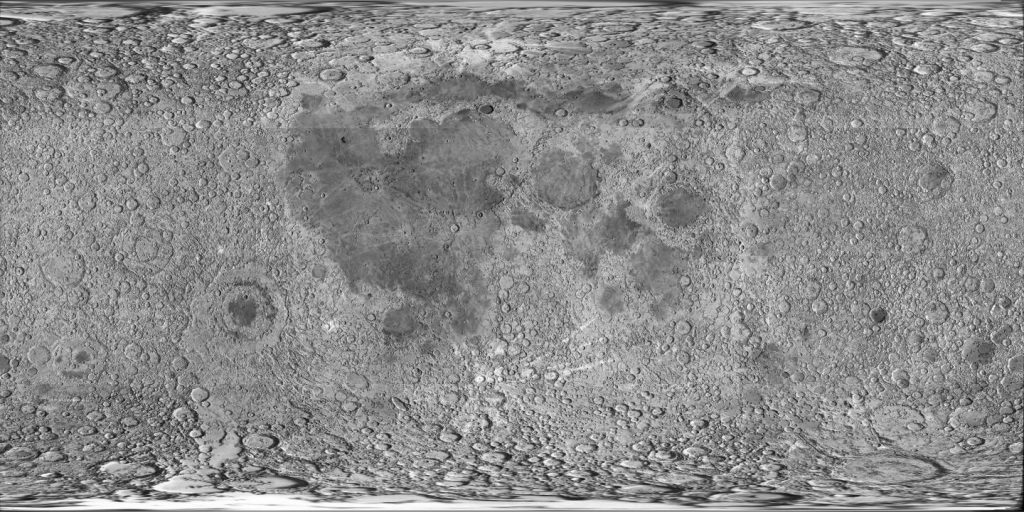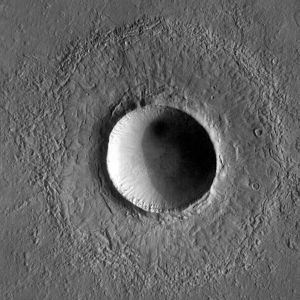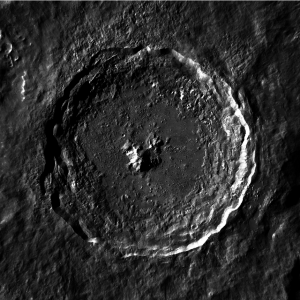
The image above shows the entire surface of the Moon. The Moon has an astounding ~30,000 impact craters that can be seen from a backyard telescope, and millions of craters have been counted to date by cameras in lunar orbit! Impact cratering occurs on every planetary body in the Solar System and is the most common geologic landform on other planets. They are a product of masses of rock in space colliding at exceptionally fast speeds with planetary bodies. We call these hypervelocity impacts for this reason.

As the collisions happen at such high velocity, unprecedented amounts of kinetic energy are released, making the process by which impact craters form truly unique. These collisions also produce truly unique rocks and geologic environments! Impact craters also vary in size and shape depending on the size of the impactor, the mass of the planetary body being hit, and the material they are hitting. Smaller impactors generally produce bowl-shaped craters called simple craters. These craters are exactly as you imagine an impact crater and are fairly small. On Earth, simple craters are mostly less than 2–4 km in diameter, but on Mars and the Moon, where the gravitational field is lower, simple craters can have diameters up to 5–10 km or 15–27 km, respectively.

Craters above these diameters no longer take on that simple bowl morphology, rather as the diameter increase uplift of the centre of the crater begins to occur. The rims of these craters also no longer have a simple bowl form, rather the rims become structurally complicated as they break and sink downwards towards the centre of the crater. For this reason, we call these craters complex craters. Due to the uplift of material in the centre of the crater, complex craters provide a unique opportunity to see material from depth on other planetary bodies that wouldn’t be otherwise possible.We also find impact craters are much larger in diameter than complex craters. On the Moon, craters over ~220 km in diameter take on a different morphology than complex craters. Two or more rings start to define the crater and so we call these craters multi-ring craters. Due to the lack of erosion on the Moon, the most well-preserved examples of multi-ring basin structures are found there; however, they are also found on Earth and other planetary bodies.
In recent decades, we have begun to study impact cratering in greater detail. Powerful computational models allow us to study this quick geologic process in detail. There is, however, still a lot of work that needs to be done to better understand the impact cratering process. These geologic landforms have the potential to radically alter the Earth very quickly and pose a threat to the Earth. They also form hydrothermal systems that could have hosted early life on Earth and other planetary bodies like Mars. Impact craters are also often associated with rich, economic deposits that are mined to supply our society with the numerous metals and resources we need. We invite you to explore the various pages of this website and learn about a truly unique geologic process that has shaped this Solar System into what we see today.
Simulation of the impact cratering process.